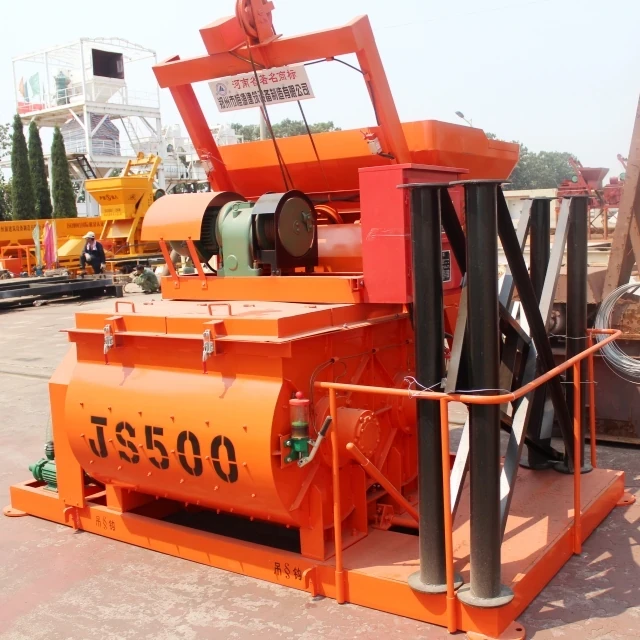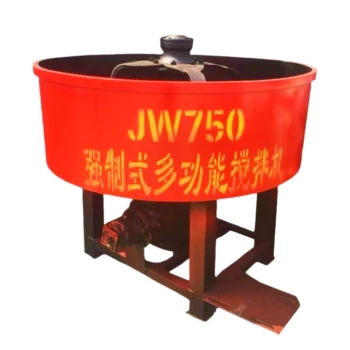Introduction
Extreme weather events—from sub-zero freezes to coastal hurricanes—can cripple concrete mixing stations, causing costly downtime and component failures. This guide delivers field-tested strategies to fortify critical systems against temperature swings, moisture damage, and power disruptions. Whether you operate in Arctic cold or tropical humidity, these proactive measures will extend equipment lifespan and maintain production continuity.
Mitigating Extreme Weather Risks in Concrete Mixing Stations
Concrete mixing stations face three primary weather threats: freezing water systems, power instability, and accelerated material degradation. Addressing these requires a dual approach:
-
Preventative Maintenance
- Insulate pipes and valves before winter
- Secure backup generators for storm season
-
Material Upgrades
- Use cold-weather concrete admixtures below 40°F (4°C)
- Switch to corrosion-resistant steel grades in coastal zones
Ever wondered why some mixing stations withstand hurricanes while others collapse? The difference lies in preemptive reinforcement.
Water Supply System Vulnerabilities and Freeze Prevention
Frozen water lines halt production and burst pipes. Protect your system with:
- Heated Enclosures: Wrap storage tanks and pipelines with thermostatically controlled heating cables (maintain 50°F/10°C minimum).
- Drainage Protocols: Install automatic drain valves to empty pipes during prolonged shutdowns.
- Alternative Water Sources: On-site water tanks (buried below frost lines) prevent reliance on frozen municipal supplies.
Pro Tip: Mixing stations in Minnesota reduced freeze-related downtime by 80% after insulating water meters with foam sleeves.
Power System Stability During Storms and Temperature Swings
Power fluctuations damage motors and control systems. Ensure reliability with:
- Surge Protectors: Install industrial-grade suppressors on all electrical panels.
- Backup Generators: Size generators to handle 125% of peak load for voltage stability.
- Battery Warmers: Keep backup battery banks above -20°F (-29°C) with thermal blankets.
For regions with frequent lightning, grounding all steel structures (including garlway winches) reduces arc flash risks.
Material and Structural Adaptations for Durability
Lubricant Performance in High/Low Temperature Extremes
Standard greases fail in extreme conditions, leading to bearing seizures:
| Temperature Range | Recommended Lubricant Type |
|---|---|
| Below -22°F (-30°C) | Synthetic PAO-based grease |
| Above 104°F (40°C) | Lithium-complex thickened grease |
Visual Metaphor: Like syrup thickens in cold, conventional lubricants turn sluggish—synthetics flow like honey year-round.
Steel Structure Corrosion Control in Humid or Coastal Environments
Saltwater and humidity corrode structural supports in 3–5 years without protection:
- Barrier Coatings: Apply epoxy-polyamide paint (8–12 mil dry film thickness).
- Sacrificial Anodes: Install zinc anodes on submerged steel components.
- Routine Inspections: Check for rust every 90 days using ultrasonic thickness gauges.
Case Study: A Florida batching plant extended pylon lifespan from 4 to 15 years by switching to hot-dip galvanized steel.
Case Studies and Best Practices
Alaska’s -60°F (-51°C) Solution:
- Pre-heat aggregate with waste heat recovery systems
- Enclose entire mixing station in tension-fabric buildings
Gulf Coast Hurricane Prep:
- Anchor silos with garlway winch-assisted tie-down systems
- Elevate control panels above 500-year flood levels
Actionable Takeaways:
- Conduct a weather-risk audit before peak seasons
- Allocate 5–7% of equipment budget for weatherproofing
- Train staff on emergency shutdown procedures
Conclusion: Building Resilience Into Every Component
Extreme weather isn’t predictable—but your mixing station’s performance can be. By hardening water systems, stabilizing power, and upgrading materials, operators transform vulnerable equipment into all-season assets. These adaptations don’t just prevent damage; they ensure the concrete never stops flowing when communities need it most.
Ready to fortify your station? Start with a component-by-component vulnerability assessment this month.
Related Products
- HZS75 Concrete Batching Plant Cement Mixer Price Concrete Mixer Bunnings Mixing Plant
- HZS180 Ready Mix Concrete Plant for Foundations with Sand and Cement
- Portable Concrete Mixer Machine Equipment for Mixing Concrete
- JW1000 Mobile Cement Mixer Concrete Mixer Truck and Batching Plant
- HZS120 Ready Mix Concrete Batching Plant Commercial Mud Cement Mixer
Related Articles
- How to Prevent Water Supply Freezing in Concrete Mixing Stations: Winter-Proof Strategies
- How Commercial Concrete Mixing Plants Cut Costs and Boost Project Flexibility
- How to Prevent Cold-Weather Lubrication Failures in Concrete Mixing Stations
- Optimizing Concrete Plant Storage: How to Balance Capacity, Compliance, and Costs
- How to Operate Concrete Mixing Stations in Winter: Protecting Equipment and Ensuring Quality














